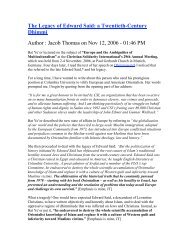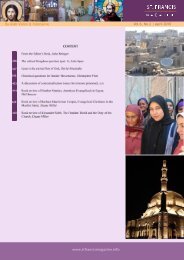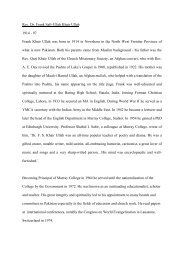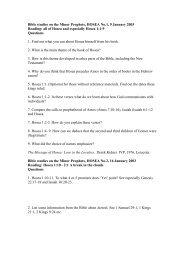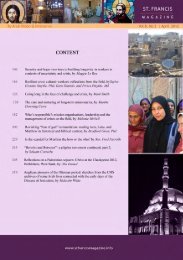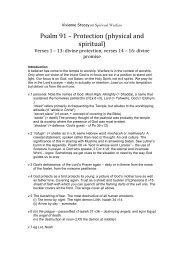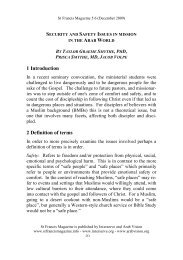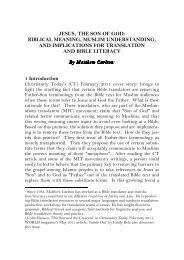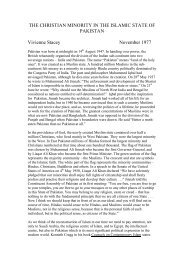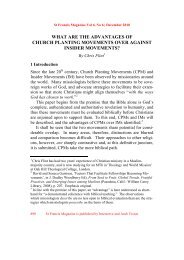download the pdf - St.Francis Magazine
download the pdf - St.Francis Magazine
download the pdf - St.Francis Magazine
You also want an ePaper? Increase the reach of your titles
YUMPU automatically turns print PDFs into web optimized ePapers that Google loves.
<strong>St</strong> <strong>Francis</strong> <strong>Magazine</strong> Vol 8, No 4 | August 2012<br />
which fails to take into account his continuing heavenly incarnation:<br />
this weakens appeals to <strong>the</strong> incarnation as a basis for such ministries<br />
and dilutes critical consideration of Islamic claims regarding Mohammed’s<br />
‘heavenly’ ministry. Span (2010d) has advanced this need<br />
for more attention to be given to <strong>the</strong> heavenly Christ, advocating<br />
<strong>the</strong> need for ‘outsider movements’ which, on <strong>the</strong> basis of Hebrews<br />
13:12-14, are comprised of “Heaven Foreground Believers (HFB)”.<br />
His rhetoric has a clear polemical edge, but <strong>the</strong> context and content<br />
of Span’s argument is important for <strong>the</strong> ongoing debate regarding<br />
C5, especially in relation to possible strategies of subversive fulfilment,<br />
discussed below.<br />
Also, within such a biblical <strong>the</strong>ology, <strong>the</strong>re is a need to recognise<br />
that <strong>the</strong> church in Acts and elsewhere in <strong>the</strong> NT constitutes <strong>the</strong> fulfilment<br />
and renewal of Israel as a particular salvation historical<br />
event (cf. Chris 2009: 160). This has, at times, caused significant<br />
contention within C5 discussions (Corwin 2007: 54). In this sense,<br />
apologists for C5 are accused of lacking a sufficient covenantal understanding<br />
of <strong>the</strong> church (Nikides 2009: 97-101; cf., similarly, Waterman<br />
2007: 57-58). Responses are weakened, however, where Biblical<br />
“narrative” is set against “clear didactic” sections of Scripture<br />
(Nikides 2009: 102) in a manner which a cohesive biblical <strong>the</strong>ology<br />
would preclude.<br />
In various o<strong>the</strong>r ways a more robust sense of biblical <strong>the</strong>ology<br />
will both streng<strong>the</strong>n and challenge <strong>the</strong> basis for C5 ministries. As<br />
Reitsma (2005) demonstrates in a nuanced discussion of <strong>the</strong> Jewishness<br />
of Jesus, considerations of C5 need to maintain a clearer analytical<br />
distinction between first-century and twenty-first-century Judaism.<br />
A more developed biblical <strong>the</strong>ology will also highlight <strong>the</strong><br />
question of differences in biblical and Qur’anic metanarratives, given<br />
<strong>the</strong>ir divergences at <strong>the</strong> fall of Adam (see Miller 2010a; n.n.<br />
2010b: 487-491). At a more micro level, a developed biblical <strong>the</strong>ology<br />
combined with <strong>the</strong> exegetical contextualisation outlined earlier<br />
will also temper appeals to biblical metaphors abstracted from <strong>the</strong><br />
overall wider symbolic matrix of scripture. Thus ‘yeast’ as frequently<br />
appealed to as a positive metaphor for insider movements<br />
(e.g. Caldwell 2000: 30; Kraft 2005b: 92; Lewis 2009b: 19) presently<br />
<strong>St</strong> <strong>Francis</strong> <strong>Magazine</strong> is a publication of Interserve and Arab Vision 488


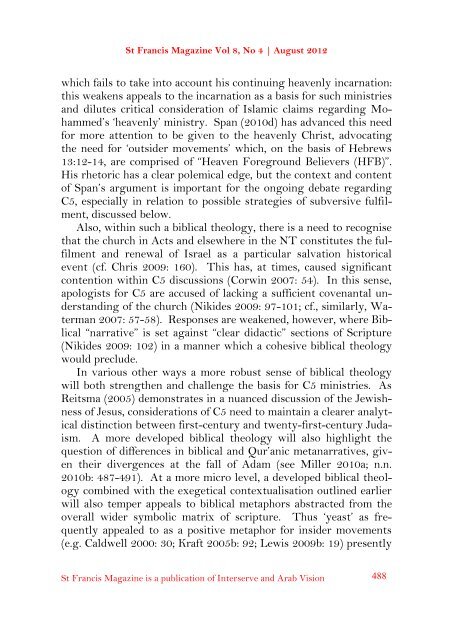

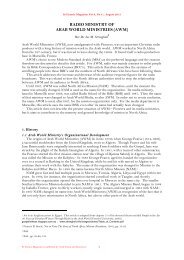
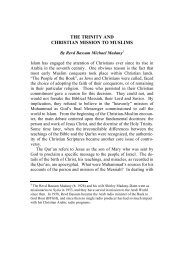
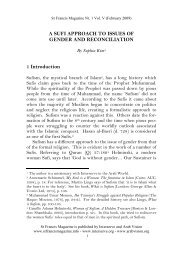
![Reflections on Surah Fatiha and the Lord's Prayer[1] - St.Francis ...](https://img.yumpu.com/49377951/1/184x260/reflections-on-surah-fatiha-and-the-lords-prayer1-stfrancis-.jpg?quality=85)
